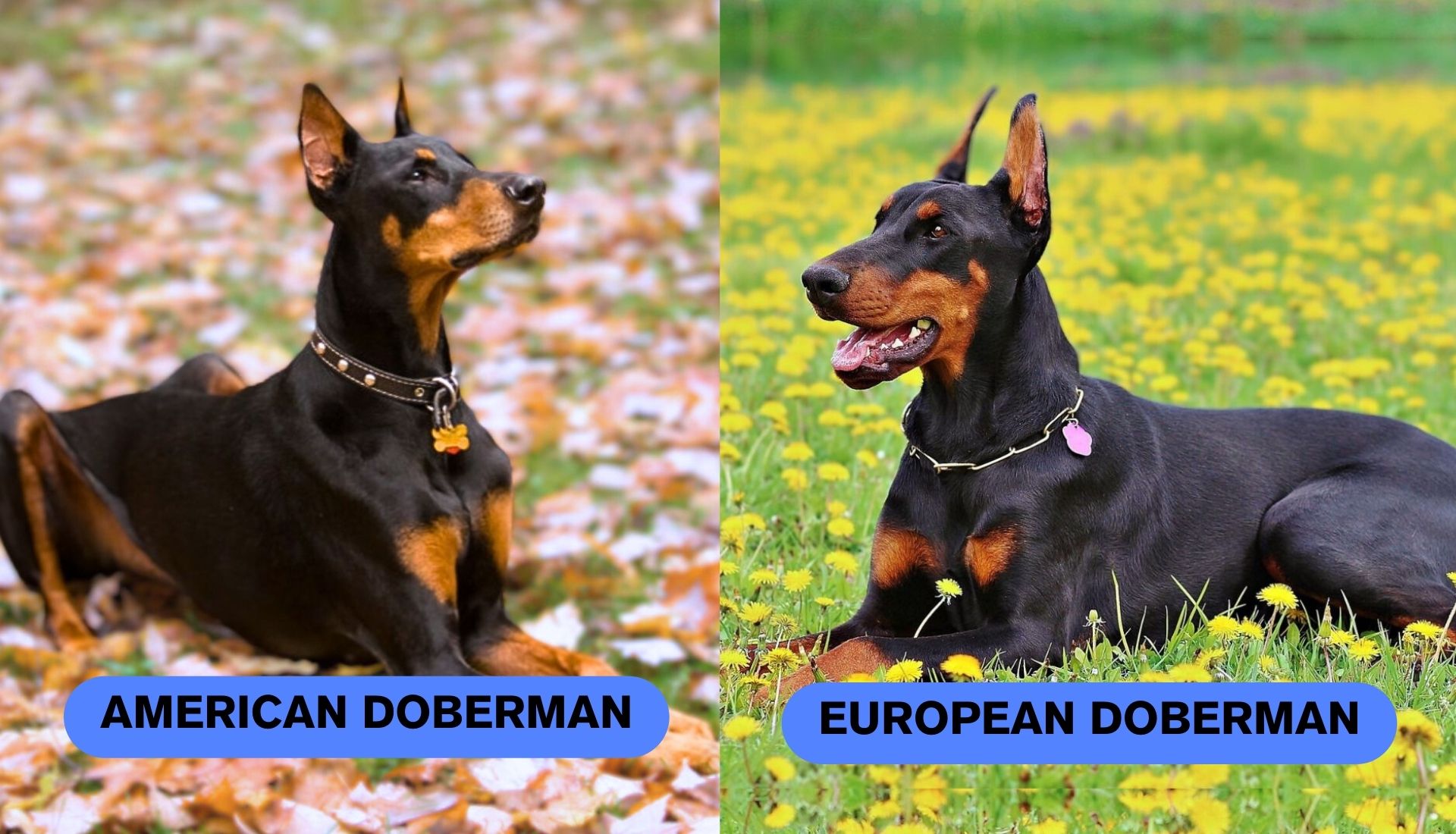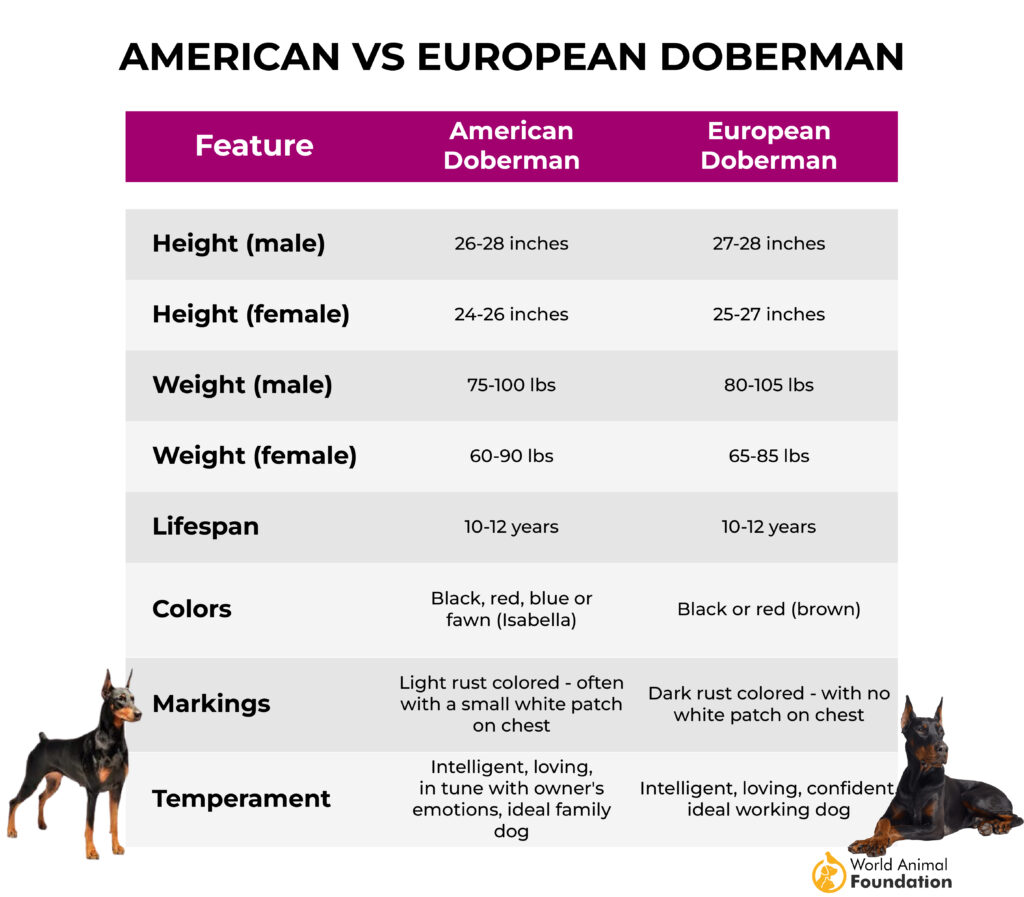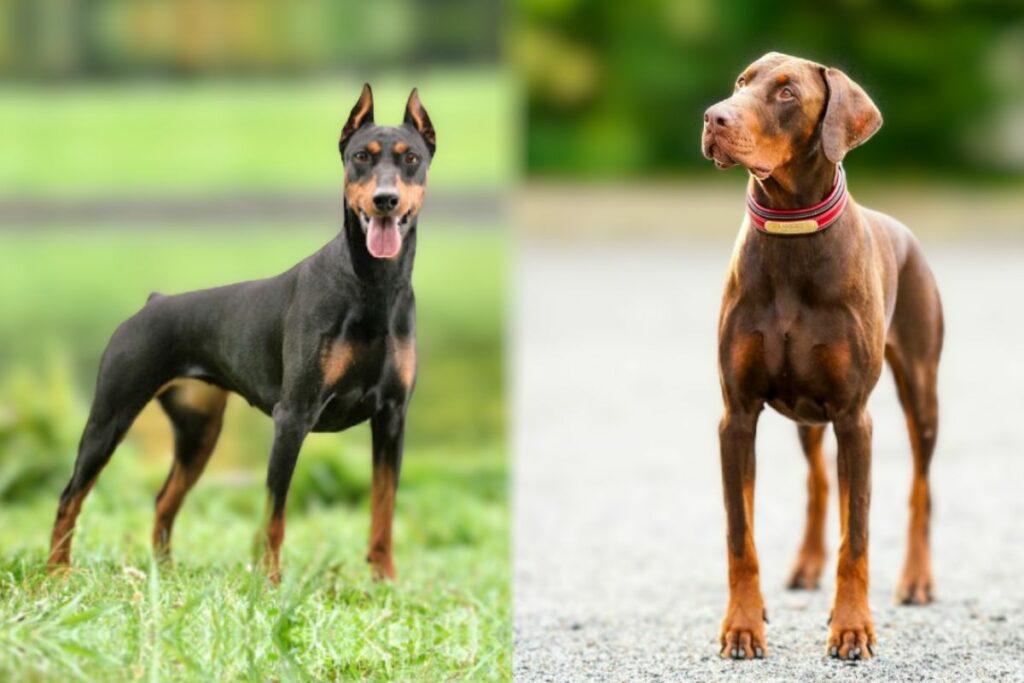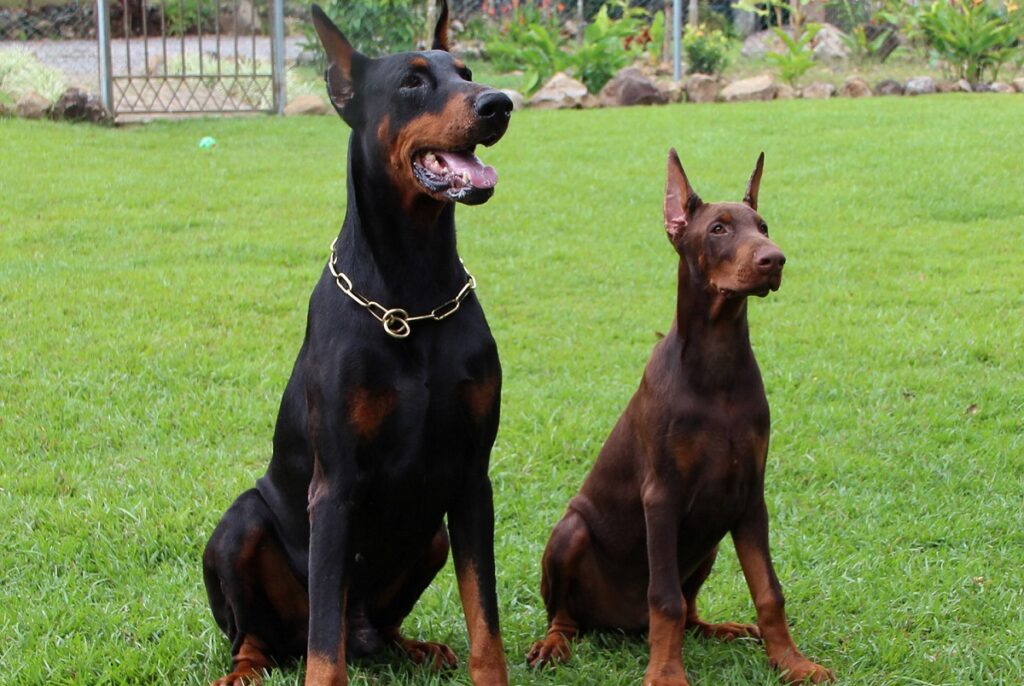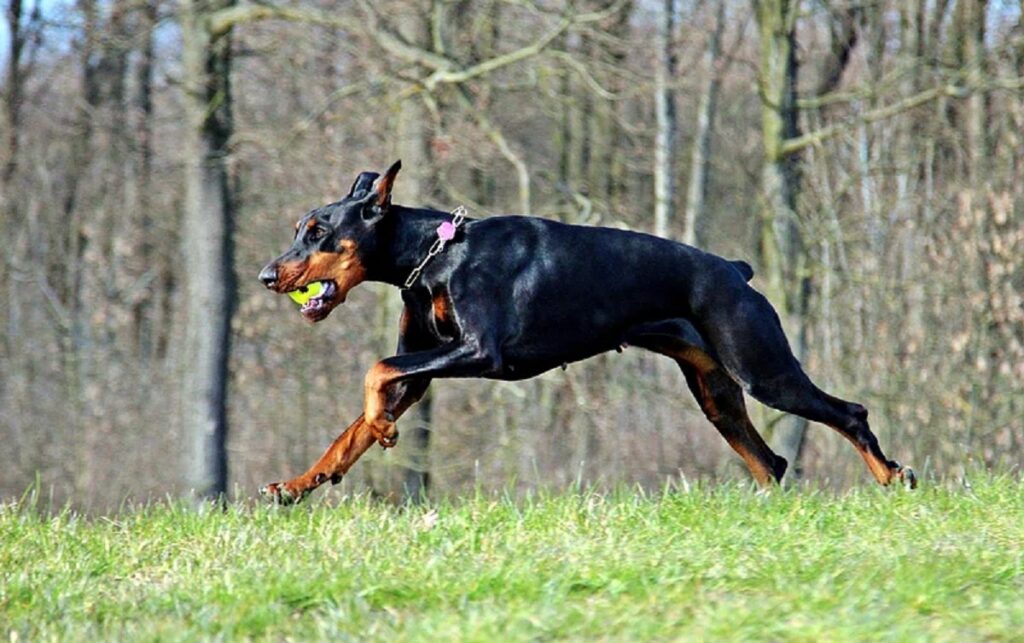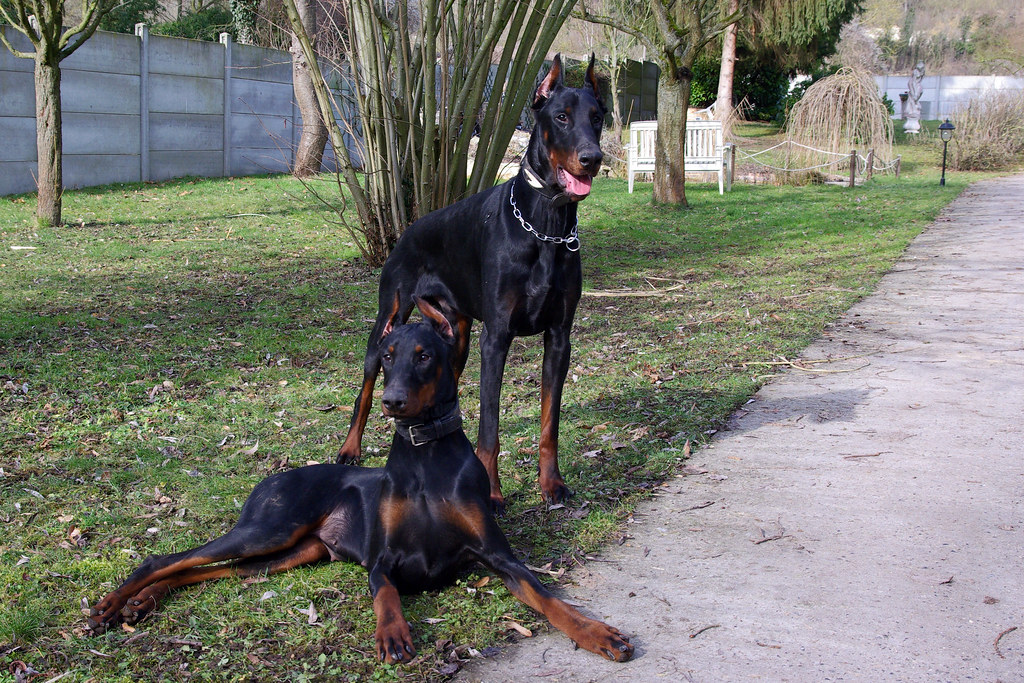The Doberman Pinscher, a picture of sleek power and intelligence, exists in two distinct lines: American and European. While both descend from the same German lineage, decades of separate breeding have shaped them into variations on a theme. This exploration delves into the key differences between American and European Dobermans, examining variations in temperament, conformation, health, and working ability. Understanding these distinctions is crucial for prospective owners seeking the right Doberman to match their lifestyle and expectations. From the show ring to the protection field, uncover the nuances of these captivating canine companions.
Did you know that the well-known Doberman breed actually comes in two distinct types? Yep, we’ve got the American Doberman Pinscher and the European Doberman, each with its own vibe.
Sure, they could be twins in a doggy line-up, but when it comes to their jobs and attitudes, they’re pretty unique. They may share a family tree, but you can spot a few tell-tale signs that set them apart if you know where to look.
Plus, their personalities have some distinct quirks that are good to know.
Curious about how the American Doberman differs from its European cousin? Stick around, and we’ll break down what separates these two apart from each other.
American vs. European Doberman
American vs. European Doberman: Physical Appearance and Size
Think all Dobermans are the same? Not quite! If you put an American Doberman and a European Doberman side by side, you might think they’re pretty much identical – but there’s more to the story. The European Doberman is usually a tad taller and beefier than its American cousin. Let’s size them up a bit.
For starters, American Dobermans usually stand between 24 to 28 inches tall, depending on whether they’re male or female. Their European relatives? They’re in the same ballpark, height-wise, ranging from 25 to 28 inches. When it comes to weight, European Dobermans tip the scales a bit more, averaging between 65 and 105 pounds, while Americans tend to be between 60 and 100 pounds.
Now, these differences are super subtle, so don’t sweat it if you can’t spot them at first glance. Both varieties rock the same sleek shape, classic Doberman colors, and those signature pointy ears and short tails.
But here’s a pro tip: the European Doberman packs more muscle, especially around the face and neck, and its coat colors are usually deeper and more vivid compared to the American’s lighter hues. Keep it simple – think of the European Doberman as the slightly more buff cousin with a bolder wardrobe!
American vs. European Doberman: Temperament
Think of the American Doberman as the chill buddy who loves a good frisbee game in the park. They’re pretty laid-back and live to make their humans happy. Sure, they’re up for a jog, but they’re just as happy sprawled out on the couch for a cozy nap.
They’ve got an innate sense of alertness, always ready to watch over their family. But give them good training, and they’ll be the life of the party, mingling peacefully with both people and other pets. They’re a hit with the kids too, often showing a silly side that’s all about fun and games.
Now, let’s chat about the European Doberman. They share plenty of traits with their American cousins but think of them as the “on-duty” type. They’re often in work mode, bred primarily for their stamina and protective instincts. They’re the pros when it comes to guarding and are known to take their job of protecting their home and humans very seriously.
While the European Dobermans can excel in active roles like military work, they’re a bit more reserved in the social department. They’re not your typical lounge-around-the-living-room dog and can be less inclined to casual hangouts compared to their American counterparts.
American vs. European Doberman: Behavior
When you look at the American Doberman and the European Doberman, you’ll notice they’ve got different vibes when it comes to behavior. The American Doberman is the loyal type, great for hanging around the house and keeping an eye on the family. They’re like your personal bodyguard who also loves to snuggle.
The European Doberman, on the other hand, is the brawny kind, built for a job. They’re the ones you’ll find on the front lines, perfect for roles in police or military service, thanks to their strength and gusto.
But don’t get it twisted – the European Doberman can still be a part of the family, and the American Doberman can roll up their sleeves for some serious work too. It’s just that the European one tends to have a natural knack for tougher jobs, while the American one might prefer a game of fetch over a boot camp.
American vs. European Doberman: Training
Now, diving into training, the American and European Dobermans each have their own style, and that’s good to know if you’re thinking of bringing one home.
European Dobermans? They’re hard workers with a no-nonsense attitude toward their jobs. They’ve got a protective streak a mile wide, so you’ll need to be both firm and patient. They’re super keen to do a good job, but let’s be real – they’ve got a bit of a stubborn side.
Get them out and about early on so they get used to being social, and stick to your training guns with lots of positive vibes, and they’ll be nailing everything from “sit” to “high five” in no time.
Now, American Dobermans – they’re the entertainers of the Doberman world. They love to be the center of attention and might just add a little pizzazz to their sit-and-stay routine. They’re a bit more chill, which can be a win for first-timers in the Doberman world.
But don’t be fooled – they’re whip-smart and ready to learn, as long as you keep the training regular and full of those good-boy treats and pats.
American vs. European Doberman: Grooming and Energy Level
American Doberman Pinschers, with their work-oriented lineage, are real athletes at heart. They crave a good workout and need about an hour of exercise daily to stay in top-notch shape, both mentally and physically.
But let’s be honest, if you’re up for it, they can happily go beyond that, even doubling their workout time. They’re all about variety – from agility drills to simple jogs or fetching sessions, and they’re game for indoor brain games like puzzles or tug-of-war when the weather’s not on your side.
Grooming-wise, American Dobermans are pretty low-maintenance. Their sleek coats stay tidy with minimal effort, requiring just the occasional brush-through to keep that sheen. Regular romps outside should keep their nails in check, and baths? They’re a rare necessity for these self-cleaning canines.
Now, over to the European Dobermans – these guys are the more intense cousins with energy to burn. They need a good two hours of action each day to keep them from turning that boredom into a chewed-up shoe collection. A couple of hearty walks or some serious yard time will do them good, alongside their American counterparts’ activities.
When it comes to grooming, European Dobermans are just as fuss-free, sporting the same kind of low-care coat. A quick brush here and there does the trick. But if they’ve been out playing an action hero in the mud, you might have to break out the shampoo for a cleanup.
American vs. European Doberman: Life Span
Since both the American Doberman and the European Doberman hail from the same line of Dobermans, when it comes to their lifespans, they’re pretty much on the same page. Both of these pups come from a lineage of sturdy, muscular working dogs and typically enjoy a life expectancy of around 10 to 12 years.
This, of course, can swing a bit depending on their health and how they’re bred.
But hey, whether it’s the American variety or the Euro one, give them a diet that’s on point and enough exercise to keep them on their toes, and you’re setting them up for a long, tail-wagging life. Here’s to many years of loyalty, protection, and good ol’ doggy companionship with either breed!
Conclusion
Both the European and American Dobermans are majestic breeds recognized by the American Kennel Club, each with traits suited to different lifestyles. The American Doberman, with its lean frame and affectionate nature, is as much a family pet as it is a protector.
Meanwhile, the European dog, with origins rooted in European breeders’ working dog standards, offers more intensity and a strong guarding instinct.
Whether you opt for a European or American Doberman, you’re choosing a dedicated companion, with the American variety being a touch more laid-back and the European bred for a bit more vigor in protection and work.
American and European Dobermans, while sharing a common ancestor, have diverged in temperament and physique. Americans prioritize elegance and a show-ring aesthetic, resulting in a slightly finer build and sometimes a more mellow temperament. Europeans, bred for working roles like police or military dogs, retain a more robust build, higher drive, and often a sharper disposition. Ultimately, the “best” Doberman depends on individual needs and preferences. Careful research and responsible breeding practices are essential for finding the right Doberman companion, regardless of its origin.

